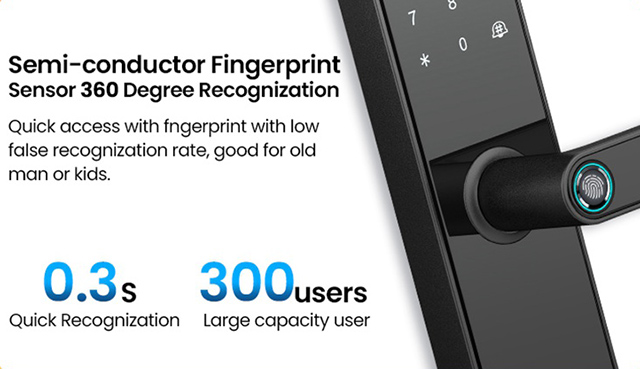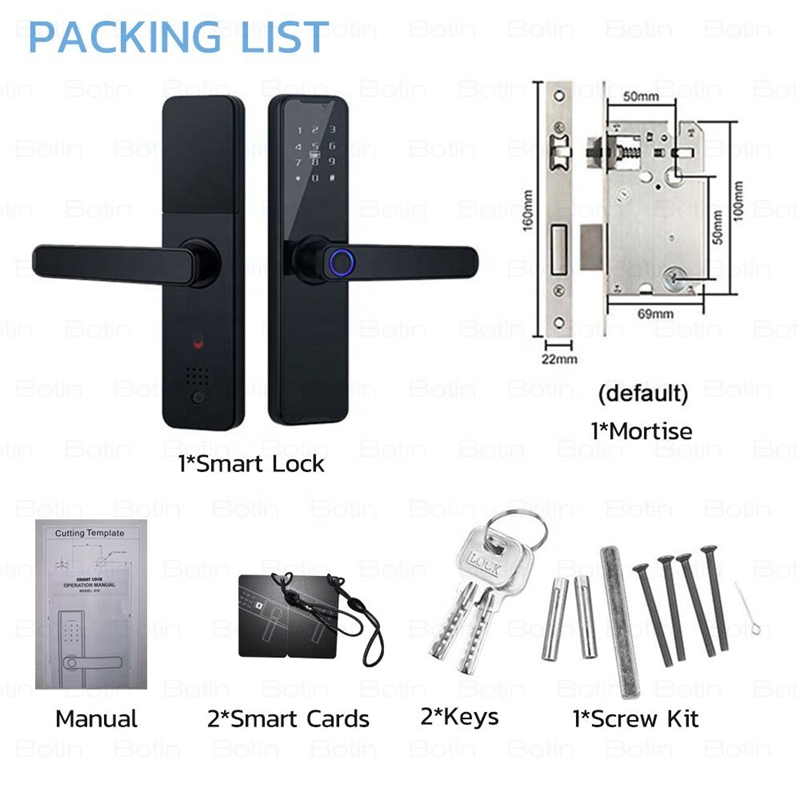In recent years, smart locks have gained significant popularity in the consumer market, offering convenience by eliminating the need for keys. However, as a modern electronic product, many users are unaware of proper usage and maintenance, which often leads to reduced lifespan or frequent malfunctions. Below are crucial tips for maintaining your smart lock and ensuring its long-lasting performance.
Exterior Maintenance
- Keep the Smart Lock CleanRegularly inspect the condition of the lock body. When inputting fingerprints, apply moderate pressure to avoid damaging the fingerprint sensor. Over time, use a soft cloth to clean the fingerprint window. Every 3 to 6 months, check for loose or misaligned components, tightening or replacing them as necessary.

- Prevent Scratches on the Lock BodyMost smart locks are made with zinc alloy and plated for durability and aesthetics. However, contact with sharp objects like stones or blades can easily scratch the surface, affecting the lock’s appearance. The acrylic number panel is especially prone to damage, so it’s essential to protect it, especially from children’s rough handling.
- Avoid Applying Pressure to the HandleThe handle plays a vital role in the lock’s functionality. Do not hang heavy items from the handle, as constant pressure can disrupt its balance and stretch internal springs, eventually causing the handle to droop.
- Avoid Unauthorized DisassemblyThe internal structure of a fingerprint lock is far more complex than a traditional one, involving various high-tech components. If you are unfamiliar with its workings, avoid disassembling it. Always contact the manufacturer or an authorized service provider if any issues arise.
Usage Tips
- Avoid Slamming the DoorWhen using a smart lock, refrain from forcefully slamming the door. During busy occasions like holidays, it’s common for people to close the door hastily, which can shift the lock or door frame over time. This habit may cause the lock to fail, especially if you own an automatic smart lock.
- Keep Away from Water and Corrosive LiquidsLike most electronic devices, smart locks are sensitive to water and corrosive substances. While some models are waterproof, most are not entirely resistant to water damage. Therefore, avoid outdoor use unless specified, and ensure that raindrops or snowflakes don’t settle on the lock when returning home. Additionally, refrain from using alcohol, gasoline, or other flammable liquids for cleaning, as these may damage the lock’s surface coating.
- Regular Battery Checks and ReplacementMost smart locks come with lithium batteries, which perform well in regular conditions but may struggle in extreme cold. In regions with harsh winters, such as Northern China, battery capacity tends to decline due to slower chemical reactions. Users should monitor battery levels closely, especially in winter, and consider switching to alkaline batteries for better cold resistance. Check batteries periodically for low charge or leakage and avoid mixing old and new batteries.
- Ensure Lock Cylinder LubricationThe lock cylinder is one of the most critical mechanical components of a fingerprint lock. If it becomes stiff or loses alignment, apply lubricant sparingly using an oil gun. Turn the handle and knob until the lock functions smoothly again, but avoid over-lubricating, which may cause other problems.
By following these smart lock maintenance guidelines, you can ensure a longer lifespan and reduce the risk of malfunctions, allowing you to enjoy the convenience of a keyless entry system without unexpected interruptions.
Post time: Sep-04-2024






